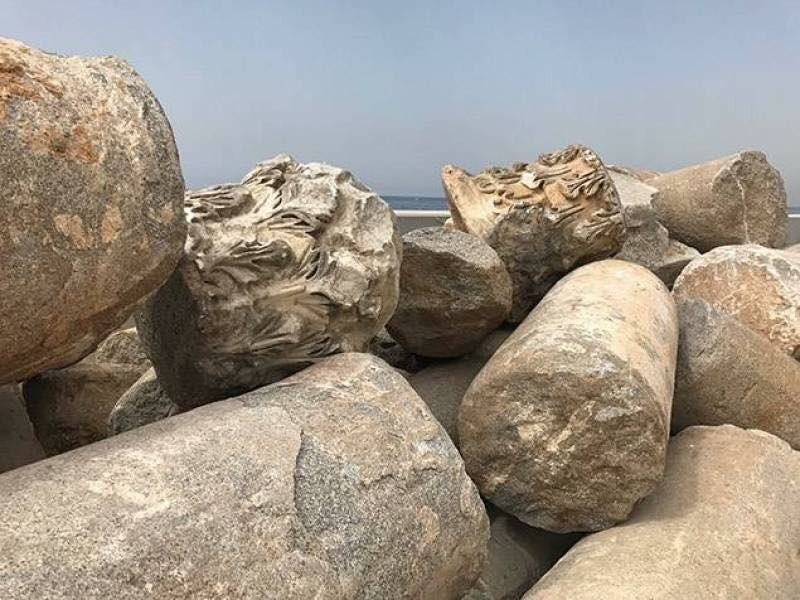
Strollers along Beirut’s waterfront in the rapidly developing Biel area have been noticing an odd feature of the local landscape: hundreds of apparently ancient columns and capitals, piled piecemeal and left at the mercy of the elements. Lebanon’s General Directorate of Antiquities (GDA) confirmed to local French-language newspaper L’Orient Le Jour that they date from Beirut’s Roman era. There are between 400 and 500 of them, and the GDA is not sure what to do with them. “As these stones have not been numbered and inventoried, it’s naturally impossible to know which specific sites or structures they belonged to,” a GDA spokesperson told L’Orient Le Jour, “unless the scientific data gathered by specialists in the 1990s was archived.”
The columns are among the vast wealth of ancient Roman, Phoenician, Persian, Greek, Byzantine, and Ottoman objects found during archaeological digs in Beirut between 1993 and 1997. The columns were originally stockpiled in a storage facility belonging to Solidere — the company created in 1994 to rebuild central Beirut after the end of Lebanon’s bloody, 15-year-long Civil War — under the direction of archaeologist Hans Curvers. Solidere had originally planned to distribute them in green spaces throughout the city, including its largest public park, Horsh Beirut, which partially reopened in 2015 after being closed for 20 years. However, with major infrastructure work underway in the Biel district, the warehouse had to be dismantled and the columns were moved to the nearest available space: vacant real estate near a waterfront promenade. The GDA spokesperson assured L’Orient Du Jour that the columns are safe and, because they are made of limestone and basalt, do not risk degradation from being left unattended near the waterfront.
Romans invaded Beirut (then known as Berytus) in 64 BCE, and it remained one of the most important cities in the eastern Roman Empire until a series of devastating earthquakes in the middle of the 6th century CE. Its Roman infrastructure and institutions included a grand gate, a forum, a renowned law school, and a hippodrome. The latter was controversially dismantled to make way for a luxury real estate development.